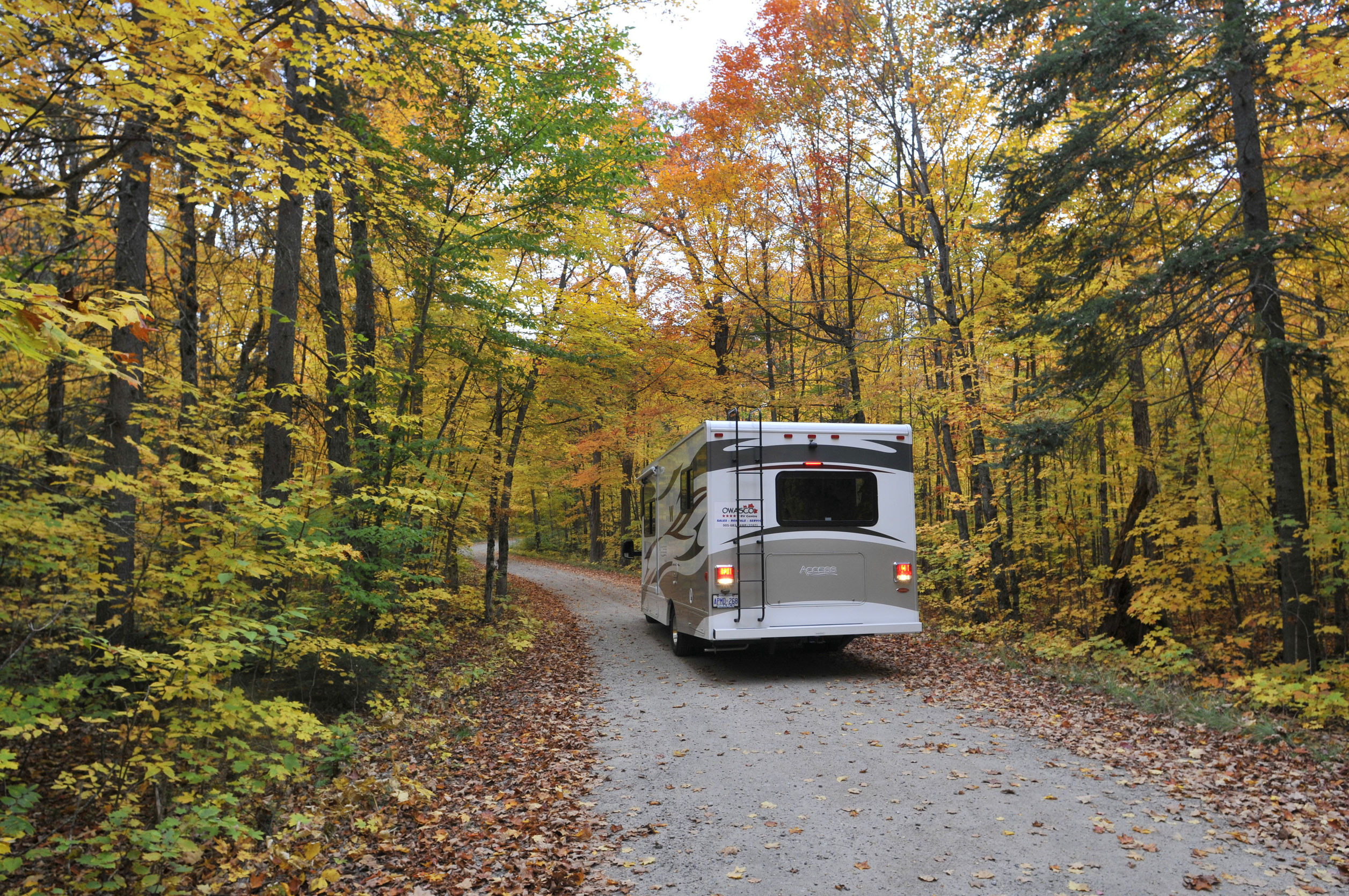There are the typical tasks you should take care of once the season winds down and it comes time to park the RV in storage – winterizing the water system, cleaning out the refrigerator, maybe even taking the wheels off and setting your unit on blocks (check out this article for closing up shop).
Sometimes it’s best to get ahead of next season by taking care of some typical RV tune-ups as you’re packing it away for the winter. Sure you can wait until spring to take care of lots of these tasks, but you wouldn’t want to be waiting on a mechanic to get on the road. Be proactive and you can depart on your first adventure without much fuss.
- Wash the unit thoroughly and inspect the roof, window seals, seams, etc. You’ll likely need to clean up your motorhome, camper, or trailer once the season comes back around, but putting it away clean will help upkeep the exterior. Use approved, appropriate cleaning supplies, and start from the top down. While you’re washing, take a close look at the roof, window seals, and any seams for evidence of cracking or drying out. Check corners for spaces. To go the extra mile, wax your RV to help protect the finish. Replace or repair what you can before it’s time to send the RV to storage. A little problem now could turn into a big one later, especially if your RV will be subject to cold weather, which can expand problem areas.
- Inspect for water leaks. After you wash your unit, go inside and check for the presence of any leaks, or ask someone else to sit inside as you go about washing. Check around air conditioning units, along windows and doors, and of course, the roof. Fix anything immediately. Before you winterize your water system, check for leaks around faucets, under sinks, or from showerheads by running the water for a short time and checking to ensure your pipes and lines are well-sealed. Check any visible water lines for holes.
- Check awning fabric and clean if necessary. Look for tears and other signs of wear, and repair as needed. Clean the awning fabric if it’s very dirty or has spots of mildew. How do you remove mildew from an awning? There are many products on the market so make sure you ask other RVers or RV supply shops for their recommendation. There are also home remedies that some people swear by, but again, it’s all at your discretion. And you may need to clean several times before you’re satisfied with the results, so don’t give up after the first try!
- Clean or replace air conditioner filters. Just like in cars, dirty filters reduce the efficiency and capacity of your air conditioning unit. Use warm water to clean it, taking your time to be thorough, and then let the filter air dry. While the filter is removed, check the evaporator coils and clean out any dirt or grime with a soft bristled vacuum attachment. Now you’ll be ready to go when the season starts up again.
- Change the oil. Acids accumulate in used oil and can corrode engine bearings, especially while sitting for long periods of time. In fact, check fluid levels across the board for your coach or camper’s engine and transmission. Top them off if needed. You’ll have a much happier and cleaner engine in the spring.
- Steam clean all interior upholstery. By the end of the season, your camper has seen a lot of sand, dirt, and food crumbs. Add dust and perhaps some pet hair, maybe a stain or two from said pet or a glass of wine, and your upholstery could use some TLC. Vacuum out the cracks and steam clean the fabric to rejuvenate your furniture. By doing this at the end of the season, you can put it away knowing there’s nothing to attract pests and no stains that will set over the months of rest.

